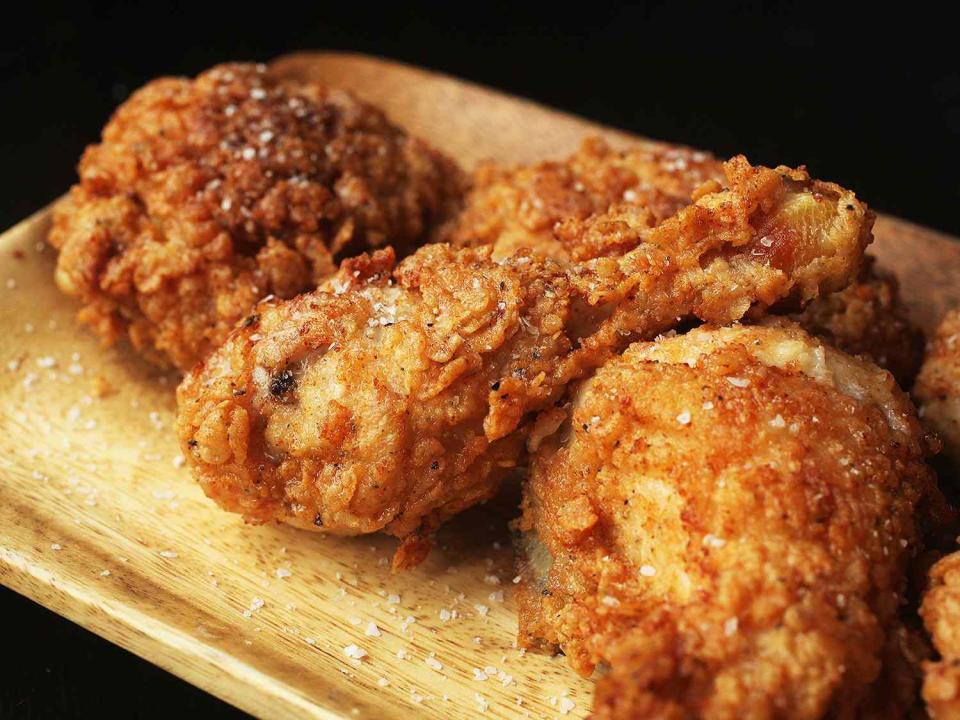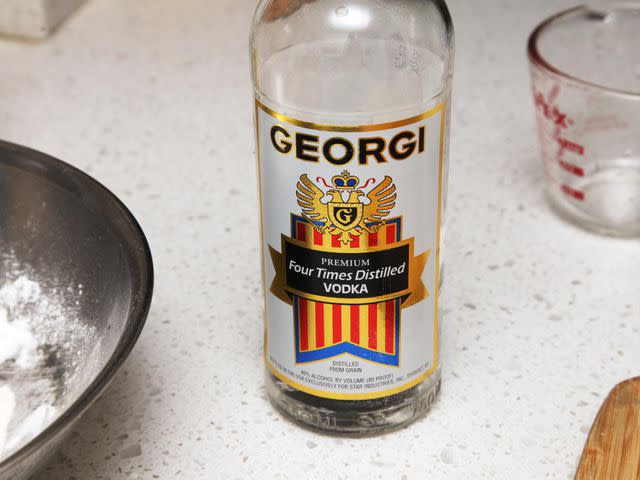For the Wispiest, Crispiest Deep-Fried Food, Grab the Vodka
Vodka's volatility, plus the way its high alcohol content inhibits gluten development, makes it ideal for using in fry batters.

Deep-fried food is best eaten right out of the fryer, which is why you should generally eat tempura or fries at a restaurant or at home—getting deep-fried items to go or delivered usually means you'll be eating soggy fries, mushy tempura, and fried chicken that's had its once-crispy coating steamed to a gummy mess.
But deep-frying at home can be a hassle. I've long found the biggest barrier to be using a liter or more of oil for one specific purpose, and coming to terms with the dreaded task of carefully straining it into an adequately large container. But after reading about how easy it is to clean cooking oil with gelatin, I've become less hesitant to fill up my wok (yes, it's an ideal vessel for deep-frying) and whip up some karaage.
Choosing the Best Pot for Deep-Frying
If you want the best results from deep-frying, there are several rules to keep in mind. Using the right pot or a wok is rule number one—look for a pot that holds at least twice the volume of the oil you'll be using. Heating the oil to an appropriately high temperature is also crucially important, as is refraining from crowding your oil (which brings down its overall temperature) and allowing a pause between batches, so that the oil can come back up to temperature.
But if you're frying up something with a batter, here's a little tip from Kenji for getting your food as crispy as possible: Add a little vodka to the batter or the marinade.

How Vodka Makes Fried Foods Crispy
Vodka helps fried foods become crispy in a couple of different ways. The first has to do with its volatility, particularly when compared to water or other liquids commonly used to make batters or marinades. During deep-frying, liquid in the batter vaporizes, which both dehydrates the batter and creates bubbles that give it more surface area. The dehydrated batter then begins browning, which ultimately leads to that essential crisp crust. Because vodka is more volatile than water, it evaporates more quickly, which dries out the batter faster and more violently. That creates larger bubbles and even more surface area, in turn resulting in a much crispier crust.

But vodka does more than add volatility to the mix: It actively inhibits the production of gluten, the network of proteins that forms when flour and water combine. By limiting gluten development, vodka yields a batter that can be mixed, and subsequently used, for far longer than a traditional batter, which will become doughier and heavier the longer it sits. It also allows you to thin out the batter, for a shatteringly delicate crust that remains crisp for much longer than a typical flour-and-water mixture.
A Basic Recipe for Batter
Our formula is simple: Just use equal parts cornstarch, flour, water, and vodka, along with a bit of salt and baking powder. This method is perfect for frying up food for a crowd, whether it's Korean fried chicken, onion rings, some General Tso's (R.I.P. Chef Peng Chang-kuei), or Buffalo fried cauliflower.
Not using a wet batter at all? You can still use vodka to enhance your crust by simply adding it to your marinade. An ounce of vodka (two tablespoons) for every cup of liquid in your marinade, followed by a dredge in your dry ingredient of choice, will go a long way toward enhancing crispness. So long, chewy, leathery crusts!
Read More
December 2016

